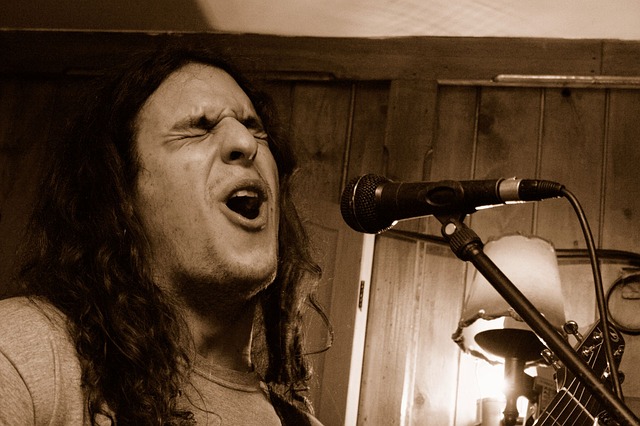We know all about chest voice and head voice but have you heard of “disconnected head voice”, a higher register with a shrill, thinner tone than your usual head voice. This is falsetto, and it often covers the highest notes a person can reach (outside of whistle register at least).
The falsetto voice uses only the thin, leading edges of the vocal cords to generate sound, and although this means it uses less power, it also uses less breath support and can, in time, anecdotal evidence suggests it may cause damage to the throat. Though both men and women can utilise falsetto, the history of the male falsetto seems to be better documented, perhaps due to it’s more noticeable contrast to a baritone voice. In fact, some books will argue that women don’t have a falsetto voice, though this is an opinion few share as video studies of laryngeal action have proven that women do indeed possess a falsetto voice, however, it tends to overlap with the typical modal register.
The falsetto voice has definite roots all around the world, independently developed, from African folk music to Hawaiian songs sung in a particular style known as ka leo ki’eki’e, in which the singer emphasises the breaks between registers.
European musicologists really began to study falsetto in the 13th Century when Italian scholars began to distinguish between chest, throat and head registers (pectoris, guttoris, capitis; they likely used capitis to refer to what we know as falsetto). Others have disputed this and instead claim that the true falsetto first emerged in 15th Century Europe. By the 16th Century, the term falsetto had come into wide usage, possibly due to the arrival of castrato singers first appearing in Italy. Though the “male soprano” and “falsetto” voices are different in technique, music theory at this point has not evolved to sufficiently distinguish between the two.
The falsetto voice has always played a role in popular music, looking back to Bill Kenny’s “If I Didn’t Care”, first released in 1939, in which he rises up through the register until his voice is comparable to a theremin.
Alternatively, we could look earlier, back to the blues and gospel music, to Homer Quincy Smith and his 1926 hit “I Want Jesus To Talk With Me” in which he uses a harrowing falsetto.
This trend continues, throughout the birth of heavy metal, with Robert Plant’s haunting yet sultry vocals on 1971’s Black Dog, to soul, as found on Marvin Gaye’s “Inner City Blues (Make Me Wanna Holler)”, the closing track on his icon “What’s Going On”, also released in 1971. Reggae also made use of falsetto vocals, such as on Junior Murvin’s 1976 “Police and Thieves”.
In fact, punk may be the only genre that has tended to avoid falsetto, with reasons ranging from the problematic to a rejection of anything resembling technical prowess. It’s not until the pop-punk movement emerging in the mid-00s that falsetto comes to punk in a noticeable way.
The annals of pop music are filled with iconic falsettos, from Prince to A-Ha’s legendary “Take On Me”, featuring a transition to falsetto so silky smooth that one can help but envy the technique. Even today, the falsetto enjoys popularity with singers like Bruno Mars and Pharrell Williams, particularly on megahit “Get Lucky”


